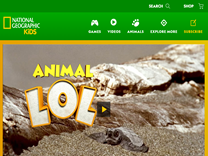Blue-Footed Booby https://kids.nationalgeographic.com/animals/birds/facts/blue-footed-booby
During the mating season, male blue-footed boobies strut around with exaggerated movements that show off their fabulous blue feet. Females tend to pick the males with the bluest feet as their mates. Parents take care of their chicks feeding and protecting them—until they’re about two months old. At that point, young boobies can survive on their own. Blue-footed boobies sleep at night, generally on land, and feed at sea during the day. Sometimes boobies feed in a group. They often fly far out to sea to look for their prey—small fish such as anchovies. The birds either zip underwater for fish from a floating position on the water’s surface or make awesome dives from as high as 80 feet (24 meters) in the air. Once it spots a school of fish, the bird folds those wings back, becoming a streamlined, torpedo-shaped predator. The booby dives into the water among the school of fish, using its long beak to grab dinner.
Save the Earth tips Find out how you can help make a difference.

